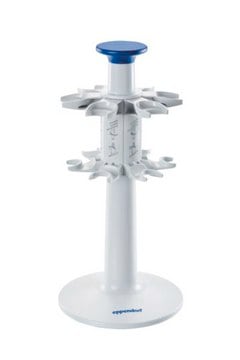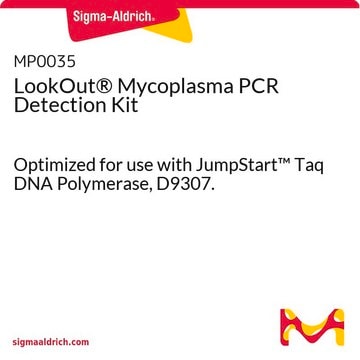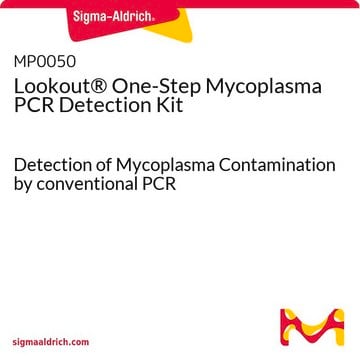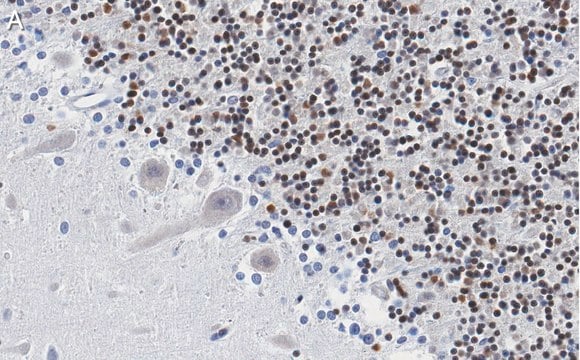Recommended Products
usage
sufficient for 192 detection reactions (two microplates)
manufacturer/tradename
Roche
shipped in
wet ice
storage temp.
2-8°C
General description
PCR ELISA, DIG-Detection kit is used for the semi-quantitative detection of digoxigenin (DIG)-labeled polymerase chain reaction (PCR) products. We recommend to use the PCR ELISA, DIG-Detection kit in combination with the PCR ELISA, DIG-Labeling kit.
Specificity
The high specificity of digoxigenin detection permits distinguishing specific and nonspecific amplification products. This is due to the hybridization step with the capture probe. The specificity of this hybridization follows the standard rules of hybridization assays. Stringent hybridization in the digoxigenin detection depends on the length and the GC content of the capture probe and the incubation temperature. Temperatures up to 55 °C are compatible with digoxigenin detection. Under these conditions, with short capture probes (18 to 20mers), identification of a single base mismatch in the capture oligonucleotide is possible. For this reason, mutations in template DNAs can also be detected using DIG.
Application
The PCR-ELISA DIG detection kit has been used for the detection of Shiga toxin-producing E. coli in food.
Packaging
1 kit containing 11 components.
Specifications
This kit is part of a complete PCR ELISA system. If you combine it with other reagents and equipment, you can adapt the system for many molecular biology applications. For example:
to classify target sequences (e.g., as in HLA-typing or cell typing).
Capacity: This size of the PCR ELISA, DIG-Detection kit allows semi-quantitative detection of approx. 50 DIG-labeled PCR products. This number will vary depending upon the number of sample dilutions, controls, and/or standards used in the assay.
- If you have an appropriate target-specific, biotin-labeled capture probe, you can distinguish PCR products that differ by as little as a single base pair. Thus the PCR ELISA system (DIG-labeling + DIG-detection) can be used:
to classify target sequences (e.g., as in HLA-typing or cell typing).
- Preparation of suitable DIG-labeled standards and addition of a colorimetric detection system will allow you to quantify PCR products.
- The microplate format used by the PCR ELISA system makes the system compatible with automated plate preparation and reading systems.
Capacity: This size of the PCR ELISA, DIG-Detection kit allows semi-quantitative detection of approx. 50 DIG-labeled PCR products. This number will vary depending upon the number of sample dilutions, controls, and/or standards used in the assay.
Other Notes
For life science research only. Not for use in diagnostic procedures.
Kit Components Only
Product No.
Description
- Control PCR Product, digoxigenin-labeled, lyophilizate, sufficient for five control reactions (three dilutions each)
- Control Capture Probe, biotin-labeled, lyophilizate, sufficient for five control reactions (three dilutions and one negative control each)
- Denaturation Solution (contains NaOH) ready-to-use
- Hybridization Buffer ready-to-use
- Washing Buffer Tablets
- Conjugate Dilution Buffer ready-to-use
- Anti-Digoxigenin-peroxidase-conjugate antibody, stabilized lyophilizate
- Substrate Buffer ready-to-use
- ABTS Tablets
- Microplate Modules (8 wells each in a strip frame), precoated with streptavidin and postcoated with Blocking reagent; shrink-wrapped with a desiccant capsule.
- Cover Foils for microplates
See All (11)
Signal Word
Danger
Hazard Statements
Precautionary Statements
Hazard Classifications
Aquatic Chronic 2 - Eye Dam. 1 - Skin Sens. 1
Storage Class Code
12 - Non Combustible Liquids
WGK
WGK 3
Flash Point(F)
does not flash
Flash Point(C)
does not flash
Choose from one of the most recent versions:
Already Own This Product?
Find documentation for the products that you have recently purchased in the Document Library.
A PCR?ELISA for detecting Shiga toxin-producing Escherichia coli.
Ge B, et al.
Microbes and Infection, 4(3), 285-290 (2002)
Articles
Digoxigenin (DIG) labeling methods and kits for DNA and RNA DIG probes, random primed DNA labeling, nick translation labeling, 5’ and 3’ oligonucleotide end-labeling.
Our team of scientists has experience in all areas of research including Life Science, Material Science, Chemical Synthesis, Chromatography, Analytical and many others.
Contact Technical Service











